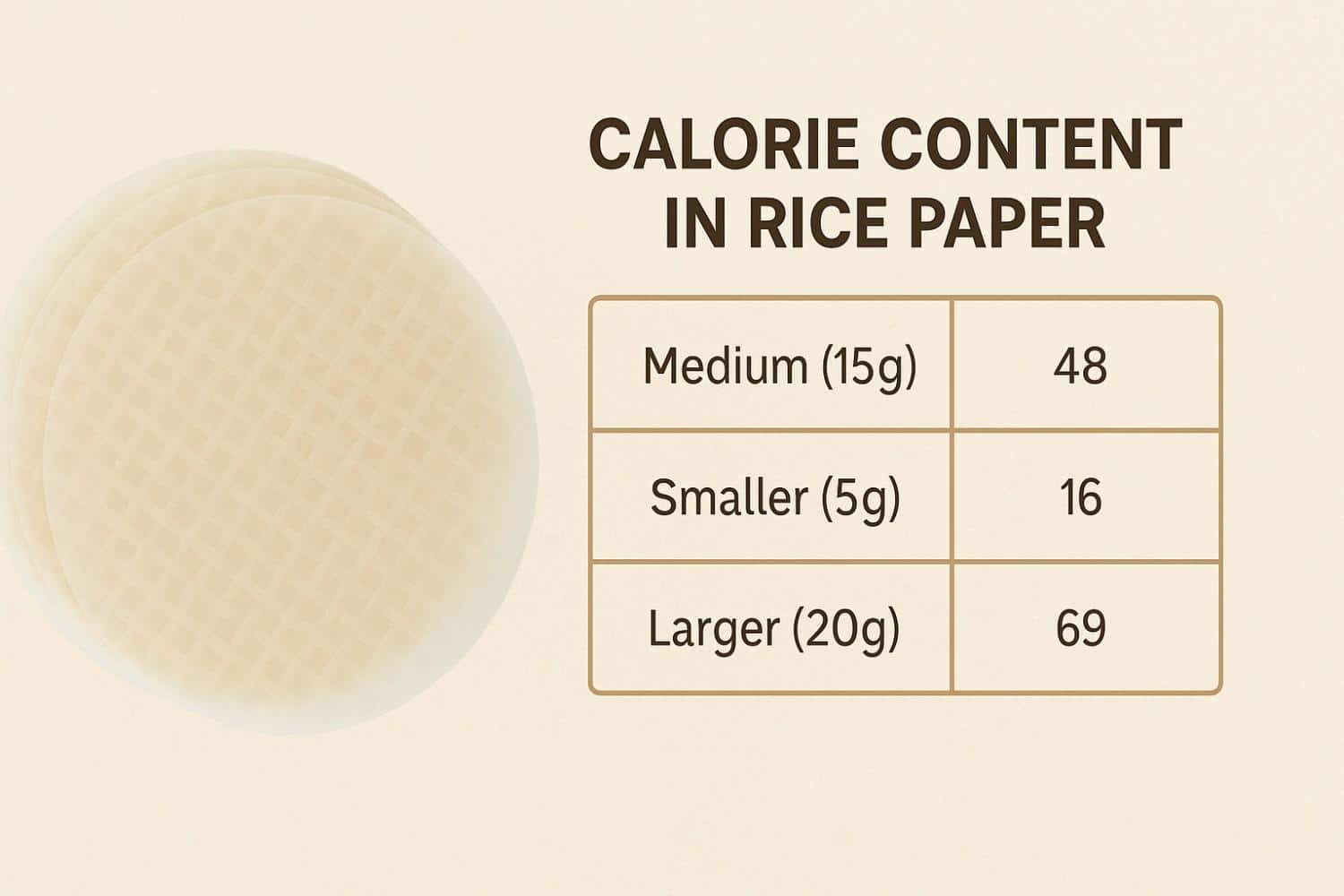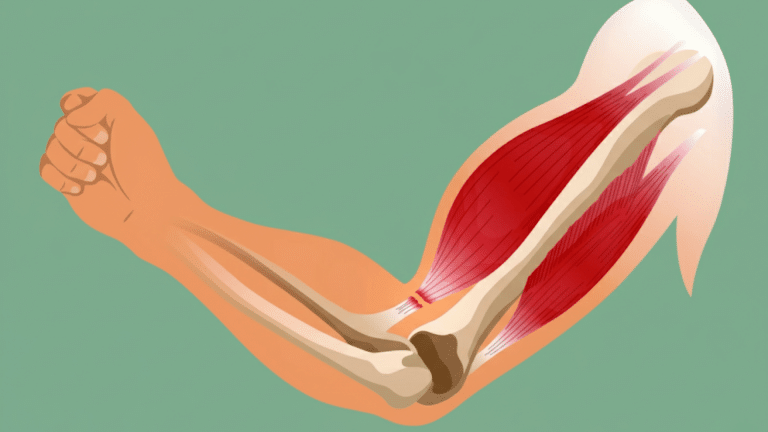Rice paper might look simple and delicate, but it’s a kitchen superstar, especially if you love fresh, light meals.
You’ve probably seen those translucent sheets used to wrap spring rolls or summer rolls, but do you really know what’s inside or why they’re such a popular choice?
In this blog, we’ll break down what rice paper actually is, what goes into making it, and why it’s a smart option for healthy, flavorful dishes.
Whether you’re counting calories, managing a gluten-free diet, or just curious about the nutrients packed (or not packed) inside, this guide covers it all, from calories and benefits to how rice paper stacks up against other wrappers.
Ready to learn how this humble ingredient can brighten your meals? Let’s begin!
What Is Rice Paper?
Rice paper is those delicate, see-through sheets you soak in water to make spring rolls or summer rolls.
It’s made from simple ingredients: rice flour, tapioca starch, water, and a pinch of salt. That’s it! The mix gets rolled out thin, dried, and packaged for your kitchen adventures.
Some brands lean heavier on tapioca for a chewier texture, while others stick to classic rice flour. It’s a staple in Vietnamese cooking, but you’ll spot it in all sorts of Asian dishes.
Knowing what’s in it helps us understand its nutrition, so let’s get to the good stuff.
Nutritional Breakdown of Rice Paper
So, what’s in rice paper? It’s mostly carbs, with a sprinkle of protein and barely any fat.
Here’s a clear breakdown based on a typical medium-sized sheet (about 15g, the kind you’d use for one spring roll).
Scale it up or down depending on your wrapper size.
|
Nutrient |
Per 15g Sheet |
% Daily Value (2,000 Cal Diet) |
|---|---|---|
|
Calories |
48 |
2% |
|
Total Fat |
0.3g |
|
|
– Saturated Fat |
0.05g |
|
|
Cholesterol |
0mg |
0% |
|
Sodium |
48mg |
2% |
|
Total Carbohydrates |
10.8g |
4% |
|
– Dietary Fiber |
0g |
0% |
|
– Sugars |
0g |
0% |
|
Protein |
0.9g |
2% |
On the vitamin and mineral front, rice paper doesn’t bring much to the table.
You might get tiny amounts of B vitamins (like thiamin or niacin), plus a dash of magnesium or zinc, but it’s not a nutrient powerhouse on its own.
Different brands might tweak the recipe, so check the package if you’re super curious. The key takeaway? Rice paper is light and simple, but it’s what you wrap inside that really shapes the meal.
Calorie Content in Rice Paper: How Many Calories Are There?
Let’s talk calories, since that’s a big reason you’re here. A medium rice paper sheet (15g) has about 48 calories.
Smaller ones (5g) might be closer to 16, while larger ones (20g) can hit 69. That’s pretty low, making rice paper a solid pick for keeping things light.
But here’s the catch: how you prep it matters. Fresh spring rolls with veggies and shrimp? You’re looking at maybe 100-150 calories per roll.
Fry them up or dunk them in heavy sauces? That number climbs fast. Compared to a flour tortilla (150-200 calories), rice paper is a calorie-saver.
Want to track it? Jot down your fillings or use a calorie app to stay on top of things.
Health Benefits of Rice Paper
Rice paper’s got some solid perks. For one, it’s low in calories, making it a great option if you’re trying to slim down or keep portions in check.
It’s also naturally gluten-free, which is a win for anyone with celiac disease or gluten sensitivity.
Being vegan-friendly is another plus; no animal products here.
Pair it with fresh veggies, herbs, or lean proteins like chicken or tofu, and you’ve got a meal that’s low in fat and can be high in fiber.
That combo keeps you full longer and might even help with digestion or steady blood sugar. The carbs in rice paper give you a steady energy boost without the crash you’d get from sugary snacks.
It’s not a superfood, but it’s a great base for healthy eats.
Potential Drawbacks and Considerations
Rice paper isn’t perfect, though.
It’s mostly carbs, with about 10-16g per sheet, so it’s not ideal for low-carb or keto diets.
If you’re aiming for ketosis, those carbs could throw you off track.
It’s also low in fiber, protein, and vitamins, so it’s not super filling or nutrient-dense on its own.
The sodium (around 48mg per sheet) can add up if you’re watching salt intake.
And if you’re frying your rolls or slathering them in creamy sauces, you’re piling on fats and calories that cancel out the “light” vibe.
Balance is key. Load up on nutrient-rich fillings to make it work for you.
Rice Paper vs. Other Wrappers: Nutritional Comparison
How does rice paper stack up against other wrappers? Let’s break it down:
|
Wrapper |
Calories (Per Serving) |
Carbs |
Protein |
Fat |
|---|---|---|---|---|
|
Rice Paper (15g) |
48 |
10.8g |
0.9g |
0.3g |
|
Flour Tortilla (30g) |
150 |
25g |
4g |
4g |
|
Nori Sheet (3g) |
10 |
1g |
1g |
0g |
|
Lettuce Leaf (10g) |
5 |
1g |
0.5g |
0g |
Rice paper beats tortillas on calories and fat, making it great for lighter meals. Nori is lower in everything but pricier and less versatile.
Lettuce is the ultimate low-cal, low-carb option, but lacks the texture of rice paper. Pick rice paper for gluten-free, low-fat meals with a bit of chew.
How to Incorporate Rice Paper into Your Diet
Rice paper is a blank canvas for healthy eats. Try these ideas:
-
Veggie-Packed Spring Rolls: Stuff with shredded carrots, cucumber, avocado, and herbs like mint or cilantro. Add shrimp or tofu for protein. About 120 calories per roll.
-
Breakfast Rolls: Wrap scrambled eggs, spinach, and a sprinkle of cheese for a fun twist.
-
Dessert Rolls: Fill with fruit and a drizzle of honey for a low-cal treat.
To boost nutrition, pair with colorful veggies for vitamins or nuts for healthy fats.
Soak rice paper in warm water for 10-20 seconds to soften, and don’t overstuff to avoid tears.
Store dry sheets in a cool, dry place; they last forever. Experiment with dips like peanut sauce (go easy for fewer calories) or soy-based ones for flavor.
The Bottom Line
Rice paper offers a light, gluten-free alternative to traditional wrappers, making it ideal for a variety of fresh, healthy dishes.
While it is low in calories and fat, its nutritional impact is modest, with most benefits coming from the fillings you choose.
This simple ingredient is versatile, lending itself well to meals that balance carbs with protein and fiber-rich vegetables.
Understanding rice paper’s nutritional profile helps clarify why it’s favored in Asian cuisine and among those seeking lighter meal options.
Ultimately, rice paper provides a blank canvas, allowing you to customize flavors and nutrients while keeping meals satisfying yet gentle on calories and those with gluten sensitivity.








